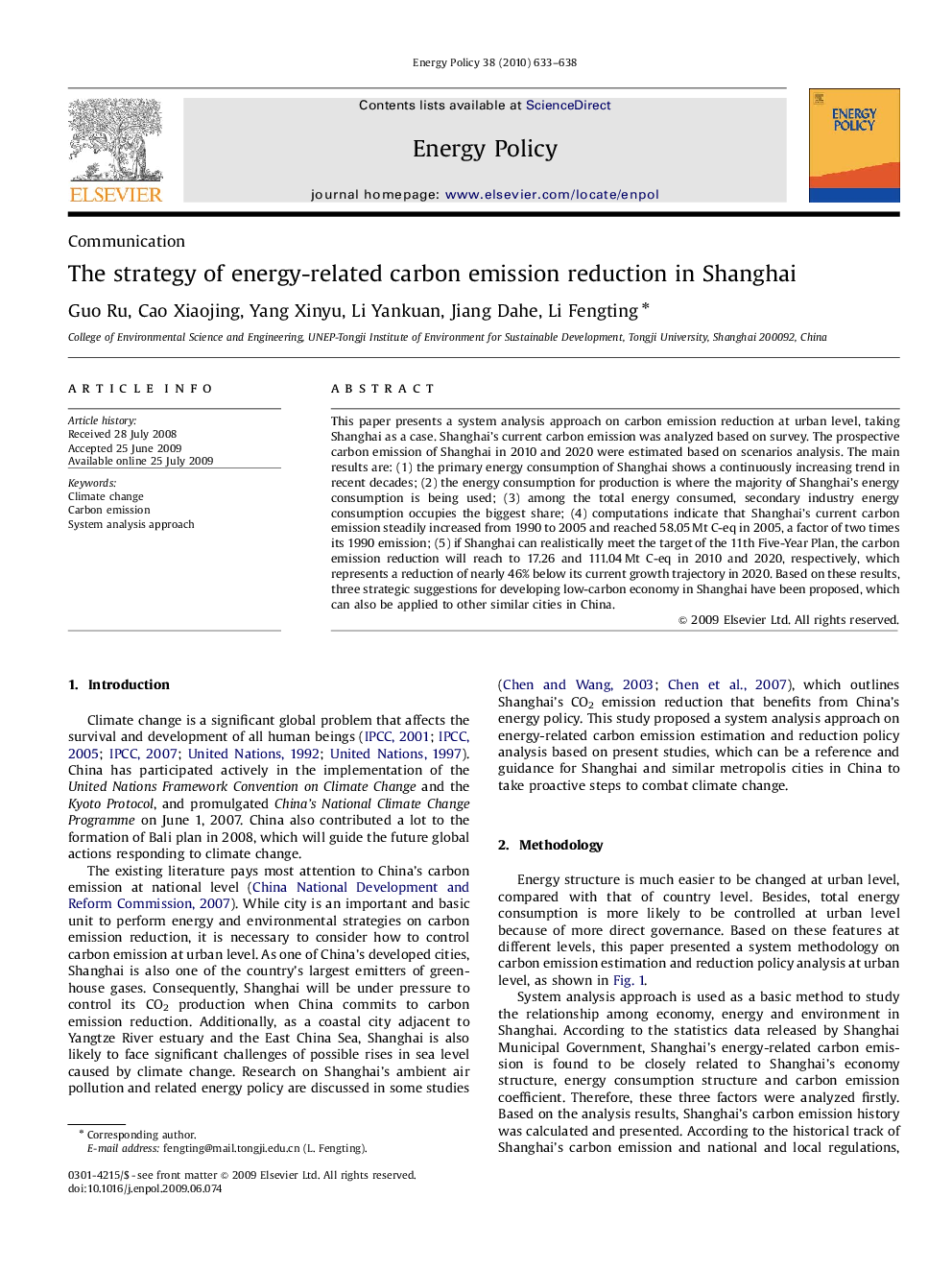| Article ID | Journal | Published Year | Pages | File Type |
|---|---|---|---|---|
| 995138 | Energy Policy | 2010 | 6 Pages |
This paper presents a system analysis approach on carbon emission reduction at urban level, taking Shanghai as a case. Shanghai's current carbon emission was analyzed based on survey. The prospective carbon emission of Shanghai in 2010 and 2020 were estimated based on scenarios analysis. The main results are: (1) the primary energy consumption of Shanghai shows a continuously increasing trend in recent decades; (2) the energy consumption for production is where the majority of Shanghai's energy consumption is being used; (3) among the total energy consumed, secondary industry energy consumption occupies the biggest share; (4) computations indicate that Shanghai's current carbon emission steadily increased from 1990 to 2005 and reached 58.05 Mt C-eq in 2005, a factor of two times its 1990 emission; (5) if Shanghai can realistically meet the target of the 11th Five-Year Plan, the carbon emission reduction will reach to 17.26 and 111.04 Mt C-eq in 2010 and 2020, respectively, which represents a reduction of nearly 46% below its current growth trajectory in 2020. Based on these results, three strategic suggestions for developing low-carbon economy in Shanghai have been proposed, which can also be applied to other similar cities in China.
